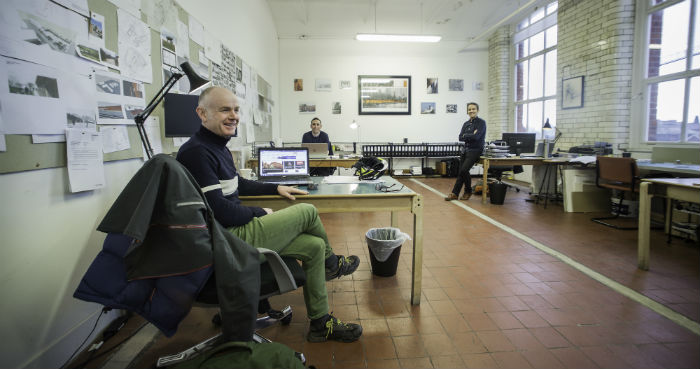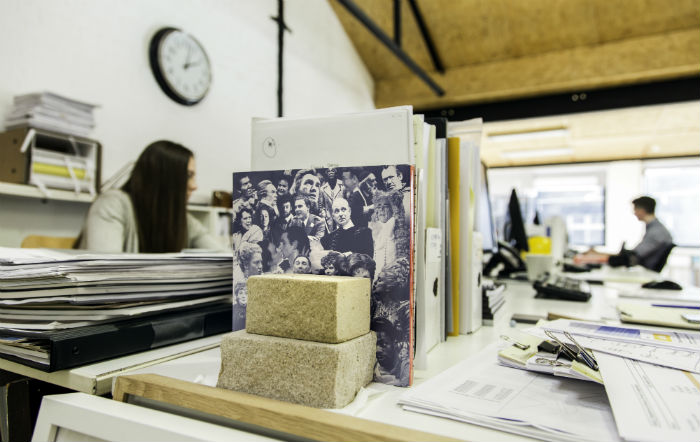The language around role models can be something of a turn off, implying some kind of unattainable ideal. Of course, no single ���������� Chartered Practice will be doing everything right. But that shouldn’t stop us from talking about what good looks like and why we view some practices as setting a more positive example than others.
When we use the term “Practice Role Model” we broadly mean:
“Organisations that exercise a positive impact – on their people, their clients, the profession and wider society.”
The nine Practice Role Models featured in this project all demonstrate ways of working that enable them to deliver excellent work, whilst at the same time encouraging their people to flourish. They prove that you can be a role model in ways that are both large and small, highly visible and quietly understated. It is not just about being the biggest or best-known
The practices represent a diverse mix in terms of size, structure, geography and work focus. Although each one offers a distinctly personal perspective on what it means to be a Practice Role Model, we were also able to identify common themes that you can find captured in the characteristics below.

The 9 Characteristics of a Practice Role Model
Clear Social Purpose
- Places social purpose, professional standards and ethics at the heart of the practice – holds themselves to account
- Understands the influence of architecture on wider society and actively seeks ways of having a positive social impact
- Takes responsibility for their own reputation and the wider reputation of the profession
- Aligns words and actions around social purpose to ensure credibility
Sustainability as Core
- Encompasses both environmental and social sustainability through architecture that is energy-efficient, enduring and meets a real need
- Takes a ‘fabric first’ approach that prioritises sustainable use of materials and ways of working, avoiding superficial ‘eco-bling’
- Challenges selves and others to innovate and question current work practices – including supply chain and contractors
- Seeks to make sustainable design accessible across different types of architecture – from one off developments and self-builds, through to social housing

Effective People Development
- Actively fosters student talent within the practice through mentoring, well-structured training and fair job allocation
- Considers ongoing career progression and prioritises time and resources for people development
- Provides varied work tasks / projects and on-the-job learning opportunities
- Creates a learning culture where questions are actively encouraged
Inclusive Working Environment
- Seeks creative ways of attracting and supporting diverse talent into architecture – particularly from underrepresented groups.
- Matches positive talk about inclusion is matched by actions and processes (e.g. effective policies on parental leave, capturing diversity metrics and clear, consistent communication.)
- Enables diverse talent to thrive supported by a progressive approach to working patterns (e.g. agile / flexible working, remote working, job sharing and part-time working)
- Manages with respect and mitigates against unconscious bias (e.g. in recruitment and promotion)
Well-being Prioritised
- Manages workload effectively and challenges ‘long-hours’ culture
- Pays attention to and takes active steps to support both physical and mental health of staff
- Actively encourages staff to maintain interests and relationships outside work
- Has the necessary infrastructure to support well-being in the workplace (e.g. the right policies, messaging and provisions in place.)

Strong Practice Leadership
- Sets clear strategy and direction for the practice
- Aligns design priorities with business imperatives - financially and commercially astute
- Communicates clear and consistent messaging from the leadership about organisational values and culture
- Gives leaders have the courage to challenge themselves and others to stretch, learn and develop
Client / Stakeholder Focused
- Spends time and energy on genuinely understanding and meeting client needs / aspirations
- Challenges the client in their best interests – including providing more cost-effective options
- Takes a wide view of stakeholders affected by / involved in a project and manages these relationships with care
- Effectively communicates on an ongoing basis with clients and stakeholders
Professional Leadership
- Develops positive relationships within and beyond the sector
- Takes time to look beyond own direct interests to advance others and the profession
- Generates and shares research, best-practice insights and knowledge
- Mentors and encourages less established practices

Pioneering Attitude
- Challenges traditional ways of doing things
- Instigates imaginative collaborations, partnerships and structure
- Act s as a thought leader (and doer) among peers in one or more aspects of their work
- Seeks new and different opportunities - entrepreneurial mindset




